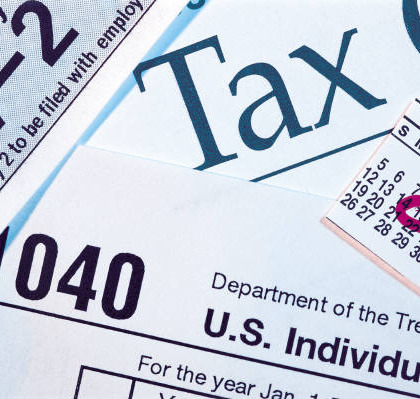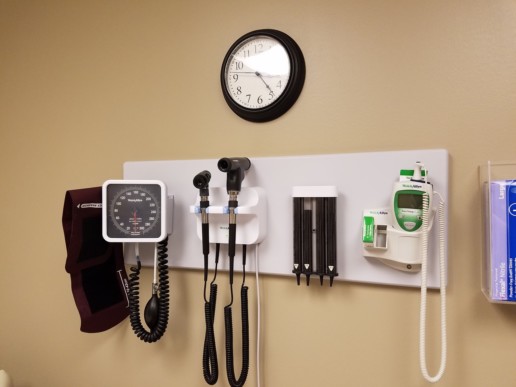ARPA: What Employers Need to Know
On March 10, 2021 Congress passed the American Rescue Plan Act (ARPA) of 2021, which was signed into law on March 11th. The ARPA attempts to address and help mitigate some of the far-reaching financial impacts of the COVID-19 pandemic. In addition to those provisions, the ARPA contains provisions that are of special interest to employers and employees.
into law on March 11th. The ARPA attempts to address and help mitigate some of the far-reaching financial impacts of the COVID-19 pandemic. In addition to those provisions, the ARPA contains provisions that are of special interest to employers and employees.
The ARPA Nitty Gritty
- COBRA Subsidy - A 100% premium subsidy is provided, funded through employer tax credits.
- FFCRA Leave - Employer tax credits have been extended through September 30, 2021.
- FFCRA Leave - Inclusion of testing and immunization as qualifying reasons for FFCRA leave.
- FFCRA Tax Credits - Definition of employee earnings eligible have been expanded.
- Unemployment - The $300 weekly increase has been extended and expanded.
- ACA - Exchange insurance subsidies are increased.
- DCAP - Contribution limits have been increased.
- Employee Retention Tax Credit - Extended and expanded eligibility for some businesses.
Let's Break It Down
COBRA Subsidy
What is it?
COBRA (Consolidated Omnibus Budget Reconciliation Act of 1986) allows employees who would lose employer-sponsored health insurance because of job loss (or reduction in working hours) to continue that insurance for 18 months. However, the employer can require the employee that elects COBRA coverage to pay the entire cost of the premium oftentimes creating a necessary, but an unexpected financial burden for the employee.
ARPA Provisions
- 100% subsidy of COBRA premiums from April 1, 2021, through September 30, 2021, for employees and their family members who lost health insurance due to involuntary termination or reduction in hours of their employment
- Allows employees who declined COBRA coverage, or elected it and dropped it, to elect subsidized COBRA
- Does not apply to employees who voluntarily terminated their employment or who qualify for another group health plan
Who Pays For It?
The subsidy is funded through the federal government through a refundable payroll tax credit.
Action Steps
- New employee notice requirements for plan administrators will be issued by the US Department of Labor
- Employees may elect subsidized COBRA starting April 1, 2021, through 60 days after receiving notice of the benefit
FFCRA Leave
What is it?
FFCRA (Families First Coronavirus Response Act) was passed in March 2020 and provided a tax credit for employers to fund two types of paid employee leave required by the law. These leave requirements expired in December 2020, but for employers that chose to continue providing FFCRA leave voluntarily, the tax credit was extended through March 2021.
ARPA Provisions
- Extends tax credit through September 30, 2021
- Adds a provision to include employee time off related to COVID-19 testing and immunization
- Increases the amount of wages eligible for the family leave credit from $10,000 to $12,000 per employee
- Provides an additional 10 days of voluntary emergency paid sick leave for employees beginning April 1, 2021
Unemployment
What is it?
Due to the COVID-19 pandemic, unemployment provisions were expanded under the previous administration to include three new federal unemployment programs. These programs were scheduled to end no later than April 2021.
- Pandemic Unemployment Assistance (PUA): Provided weekly benefits to independent contractors, self-employed individuals, and other workers that typically would not be eligible for unemployment benefits
- Pandemic Emergency Unemployment Compensation (PEUC): Provides weekly benefits to individuals who have exhausted their eligibility for all other unemployment benefits
- Federal Pandemic Unemployment Compensation: Provides an additional $300 weekly payment to individuals already receiving PUA, PEUC, or regular unemployment benefits
ARPA Provisions
- Previously established provisions that were set to expire have been extended through September 6, 2021
- Changes how unemployment benefits are taxed, exempting the first $10,200 from federal income tax for each spouse in households with under $150,000 in adjusted gross income.
ACA
What is it?
The ACA (Affordable Care Act) established health insurance exchanges for the purchase of individual health insurance coverage, as well as premium tax credits. These tax credits are not available to individuals with income at or above 400% of the federal poverty level.
ARPA Provisions
- Temporarily eliminates the income cap on subsidies for a period of two years
- Limits the total amount a household is required to pay for health coverage through the Exchanges to 8.5% of household income
- Increases federal subsidy amounts available for lower-income individuals, in some cases eliminating premium costs entirely
- Increases federal funding intended to encourage states to expand Medicaid programs (if they previously had not done so)
- All provisions are temporary and will expire in two years
DCAP
What is it?
A DCAP (Dependent Care Assistance Plan), also sometimes referred to as a dependent care flexible spending account (FSA), is an employee benefit plan that helps employees pay for the care of a qualifying dependent, such as a child or elder, as defined by Internal Revenue Service (IRS) regulations.
ARPA Provisions
- Increases annual contribution limit from $5,000 to $10,500 ($2,500 to $5,250 for married filing separately) for tax years beginning after December 31, 2020 and before January 1, 2022
- Employers meeting requirements can retroactively amend plans to incorporate the increase
Action Steps
- Employers with DCAPs can retroactively amend plans, if
- The amendment is adopted by the last day of the plan year in which it is effective; and
- The plan operates consistently with the terms of the amendment until it is adopted.
- It is recommended that you speak with your benefits advisor to ensure plans meet the requirements and stay in compliance
Employee Retention Tax Credit
What is it?
The Employee Retention Tax Credit was originally enacted with the CARES (Coronavirus Aid, Relief and Economic Security) Act. The credit was tended to encourage employers to retain employees on their payroll who were unable to work due to COVID-19 related reasons. This credit was set to expire in June of 2021.
ARPA Provisions
- Extends the credit through the end of 2021
- Expands eligibility to some small startups that began operating after February 15, 2020. Qualifying businesses will be eligible for a maximum credit of up to $50,000 per quarter even if they do not experience an eligible decline in gross receipts or a full or partial suspension
- Creates a new provision for 'severely financially distressed' employers which beginning in the third quarter of 2021 allows employers of any size to count all wages toward the $10,000 cap.
New financial benefits give small business employees early wage access
Mandatory quarantines and business closures during the coronavirus pandemic have taken a particularly large financial toll on small businesses, forcing many employers to reduce wages and health coverage.
Sixty-five percent of small businesses said they were either extremely concerned or very concerned about how the coronavirus will affect their business, according to a survey by Freshbooks. In addition to financial pressure, small business employers are also tasked with providing benefits that will support struggling employees.
“COVID-19 just exacerbated what was going on in the market and put even more pressure on small companies and their employees,” says Emily Ritter, head of product marketing at Gusto, a payroll and employee benefits platform for small businesses. “Employees across America are living paycheck-to-paycheck and the stress of that can be expensive for households.”
Gusto has launched a new set of health and financial wellness benefits to provide employees with early access to earned wages, medical bill reimbursement and a savings account.
These financial tools are especially beneficial as healthcare costs drive many employees into debt, Ritter says. According to a Salary Finance survey, 32% of American workers have medical debt, and 28% of those who have an outstanding balance owe $10,000 or more on their bills.
“Financial health and health coverage is so inextricably linked, which has come into the limelight with COVID-19,” Ritter says. “We're seeing that small group health insurance is something that is really important, so if we can help small businesses help their employees with health bills, that's another component of financial health.”
Gusto’s new benefit offering allows employers to contribute to employees’ monthly health insurance costs. Contributions can vary from $100 to amounts that would cover an employee’s entire premium. The contributions are payroll-tax-free for the business and income-tax-free for employees, and employers also have the flexibility to adjust their contribution at any time.
“A large portion of American workers say that they wouldn't be able to handle the financial implications of a large injury or illness, and of course illness is top of mind in the midst of a global pandemic,” Ritter says. “So it was really important for us to show up with these solutions.”
Additionally, Gusto has launched Gusto Cashout, which gives workers early access to earned wages without any fees, helping them avoid having to turn to payday loans, overdraft fees or credit card debt between paychecks. With a new debit card function and cash accounts — which also provide interest — workers can put aside savings straight from their paychecks, helping them better navigate short-term emergencies and unexpected expenses.
Even before coronavirus, less than half of adults living in the U.S. had enough savings to pay for a $1,000 emergency expense, according to a Bankrate.com study, and 50% of employees said they live paycheck to paycheck, a CareerBuilder survey found.
“We're really trying to help people be prepared in those rainy day moments and avoid the debt cycle that happens,” Ritter says. “Because this product is free [for our clients’ employees] and the wages come out of their paycheck on payday, there is no continuous debt cycle that happens with a payday loan.”
Fifty-one percent of Americans feel at least somewhat anxious about their financial situation following the coronavirus outbreak, according to a recent survey from NextAdvisor, and nearly three in 10 Americans’ financial situation (29%) has been negatively impacted since the pandemic began.
Providing employees with financial wellness resources and other support can help small business owners build a more efficient and competitive business, despite the challenges faced during COVID, Ritter says.
“It's a win win for their employees and for their business,” Ritter says. “When employees are more financially stable, they're able to show up more effectively at work.”
SOURCE: Nedlund, E. (13 October 2020) "New financial benefits give small business employees early wage access"(Web Blog Post). Retrieved from https://www.employeebenefitadviser.com/news/new-financial-benefits-give-small-business-employees-early-wage-access
4 key reasons employers must offer financial security benefits
During the continuous trials of the coronavirus pandemic, it's important for employers to contribute to their employee's financial wellness. Read this blog post to learn more.
A financial security benefit that helps employees pay for and manage their out of pocket healthcare expenses allows an employer to keep healthcare costs down, while providing a much-needed benefit to their employees, one that pays dividends for years to come.
With the uncertainty of the ongoing coronavirus pandemic, it is more vital than ever that employers contribute to employees’ overall financial wellness.
There are four key reasons why employers need to provide a financial security benefit to their employees.
First, restore the "benefit" in your health benefit offerings. The standard employer-sponsored health plan comes with nearly an $8,000 out-of-pocket expense.
Considering that the vast majority of Americans live paycheck-to-paycheck and 40% struggle to cover a $400 emergency expense, it’s no wonder why so many individuals consider themselves functionally uninsured despite being covered by an employer’s health plan. When an employer’s price tag to purchase that insurance for a family now exceeds $20,000 a year, it is painful for employers to witness their employee benefit suddenly become an employee liability.
Providing employees with guaranteed access to credit for medical expenses on consumer-friendly terms that they may not have access to on their own is of tremendous benefit. A benefit like this gives employees something their health plan alone can’t – financial security.
Second, remove the barriers to care. More than ever, employees with high deductible health plans are skipping care, which has costly consequences. Employees who skip care stay sick for a longer period of time and as a result, employers lose worker productivity. When outcomes erode and care is delayed, employers will see an increase in health plan expenses. By providing a financial security benefit from the start, employees can seek care with confidence, and prevent this unhealthy ripple effect from happening.
Third, increase participation in Health Savings Accounts. HSAs are great additions to an employer’s benefit line-up. In some cases, they are also the only plan design that an employer can afford to offer. Employees who are presented the choice of an HSA often bemoan that while the program should work well for them, and that the price-tag for the premium is right, the specter of a one-time deductible exposure makes them hesitant to enroll.
While lower premiums paired with some employer HSA contributions can often cover that exposure, employees worry about the timing of these expenses, particularly if they arrive early in the plan year. Providing an affordable way for employees to pay for their healthcare expenses whenever they are incurred, removes a major barrier to HSA plan election. Further, adding a financial security benefit is much more cost effective for the employer than front-loading the HSA with hard dollars at the beginning of the plan year.
Finally, they are great recruitment and retention tools. According to a recent Gallup poll, the availability and affordability of healthcare tops the list of concerns in America. As employers grapple with objectives, such as attracting, and retaining talent and balancing costs, a financial security benefit not only addresses a major employee concern, but also can help organizations differentiate themselves from their competitors.
With COVID-19 changing the landscape of healthcare and open enrollment around the corner, employers need to rethink their benefit strategy while keeping costs down. Attracting and retaining employees remains a high priority for employers and providing a financial security benefit will not only attract top talent but will also save on an employer’s overall bottom line.
SOURCE: Chambers, O'Meara A. (03 November 2020) "4 key reasons employers must offer financial security benefits" (Web Blog Post). Retrieved from https://www.employeebenefitadviser.com/opinion/4-key-reasons-employers-must-offer-financial-security-benefits
Top 10 year-end tax planning tips
Another year is coming to a close, which only means a season of taxes is slowly approaching. Tax time can often be one of the most stressful times of the year for businesses, employees, and even clients, but that just means helping clients with a less stressful year-end planning session more crucial than ever. Read this blog post for helpful tips.
Between the upcoming presidential election and the COVID-19 pandemic and its attendant stimulus packages, this year has seen more than its share of uncertainty around tax — which makes helping clients with year-end planning all the more crucial.
“Year-end tax planning is more important than ever this year,” said Renato Zanichelli, national managing partner of tax services at Grant Thornton, in a statement. “Businesses both large and small have been dealt a tough hand. Having the right tax strategy will help businesses navigate this time of historic disruption and put them on the right track as a new year begins.”
“Lawmakers dedicated trillions of dollars to keep families and businesses afloat, but those provisions may also require quick action, in many cases by the end of this year,” added Dustin Stamper, managing director in the firm’s Washington National Tax Office. “The government wants to get money in the hands of those who need it, and many of the most generous provisions are tax changes that provide welcome liquidity for businesses and timely relief for individuals.”
With that in mind, the Top Eight Firm has put together a list of 10 key tax considerations for year-end planning for both individuals and businesses (below); for more see their year-end tax planning guides.
Accounting method changes are among the most powerful ways to accelerate deductions, but remember any non-automatic changes a company wants to make effective for the 2020 calendar year must be made by the end of the year. C corporations make NOL refund claims themselves, but passthrough businesses like partnerships and S corporations pass losses onto to owners, who will make claims.
The fastest way to obtain a refund is generally by filing a tentative refund claim, but these must be filed by Dec. 31, 2020, for the 2019 calendar year. If losses will be in 2020, the business should start preparing to file early, because they cannot claim an NOL carryback refund until they file their tax return for the year.
Tax rules allow businesses to claim certain losses attributable to a disaster on a prior-year tax return. This is meant to provide quicker refunds. President Donald Trump’s COVID-19 disaster declaration was unprecedented in scope, designating all 50 states, the District of Columbia and five territories as disaster areas. This means essentially every U.S. business is in the covered disaster area and may be eligible for refunds from certain types of losses. Under this provision, a business could claim a COVID-19 related disaster loss occurring in 2020 on a 2019 amended return for a quicker refund. The provision may potentially affect losses arising in a variety of circumstances, including the loss of inventory or supplies or the closure of offices, stores or plants. To qualify, the loss must actually be attributable to or caused by COVID-19 and satisfy several other requirements.
Tackle growing healthcare costs with earned wage access
As open enrollment begins to trickle in, advisors are looking for new and improved ways to help employees to leverage out of pocket costs on the year that is upon them. For both and employers and employees, healthcare strategies are an integral part of workforce management. Read this blog post to learn more.
It’s that time of year when we all learn that health care costs are going up (again).
As the nonprofit Business Group on Health reported, the average employee will be hit with $15,500 in out-of-pocket costs next year, and the average employer will pick up about two-thirds of that tab. Even with shared responsibility, those are big hits for both employer and worker, which is why health care strategy must be integral part of workforce management.
However, benefits managers may not be aware of a tool that may help keep health care costs down for both employers and workers, and which lets employees more fully participate in the economy they helped create.
Earned Wage Access (EWA), sometimes known as on-demand pay, is a revolutionary benefit that I wrote about back in May. It comes at no cost to employers, and is available to workers at little or even no cost, depending on the provider.
Earned Wage Access allows workers to access a portion of their earned wages that they have not yet been paid on. Depending on the provider, those wages can be immediately accessed on the provider’s payroll card, or just about any debit card.
What does on-demand pay have to do with health care?
When employees receive medical services, payment is often required up front. If employees only get their paycheck every two weeks, they may not have access to liquidity to pay for those services. The result is that an employee may be forced to delay a necessary visit or procedure, and if they are suffering from an acute condition, their health may be severely compromised.
However, with immediate access to the money employees have earned, but not yet been paid on, they have access to health care in the moment. Waiting rooms are bad enough. Waiting periods for basic health care are unnecessary and harmful.
There’s another reason why on-demand pay is critical to your health care strategy. There is a stealth health care crisis brewing in America. Millions have delayed preventative and necessary care due to the COVID-19 situation.
Every delayed preventative screening, test or check-up can result in a failure to discover a serious medical condition that requires treatment. That raises treatment costs down the line for both company health plan and employee.
By wrapping earned wage access into your health care strategy, you can encourage workers to utilize preventative and maintenance care at any time — not just on payday. Doing so also eliminates a common impediment: some people just don’t like to go to the doctor. If they have the excuse not to go, they’ll use it. EWA removes that psychological obstacle.
The same goes for access to medications. High cholesterol, high blood pressure, anxiety/depression, and many other chronic conditions require regular doses of prescribed drugs. Missing even a single day of some of these medications can significantly increase risk of adverse consequences in patients.
Earned wage access allows employees to refill medications when they need to. Waiting can be deadly. Some EWA providers even offer prescription discounts with their smartphone app.
Physicians encourage timely health care for obvious reasons. Employers should encourage it as well, not only out of concern for workers, but because timely health care can result in lower health care costs. However, it’s one thing to encourage timely health care visits. It’s another to offer timely pay to workers so they can meet that request. Earned wage access creates immediate health care access.
On-demand pay usually comes at no cost to employers. Some providers are already integrated with the largest payroll services, and others are integrated with dozens of them. The cost of earned wage access varies by provider, but certain ones offer the service at no cost for employees who use the provider’s payroll card. Other services have costs that are extremely low.
Adding earned wage access to your benefit plan will benefit your overall health care strategy, and your employees.
SOURCE: Meyers, L. (05 October 2020) "Views: Tackle growing healthcare costs with earned wage access" (Web Blog Post). Retrieved from https://www.employeebenefitadviser.com/opinion/tackle-growing-healthcare-costs-with-earned-wage-access
Pandemic Causing Many to Lose Employer-Sponsored Health Coverage
Many small businesses have suffered due to the implications that the coronavirus pandemic has placed on them. Many of those struggles are rooted in financial instability during this time which has caused many to stop paying health insurance premiums. Read this blog post to learn more.
The COVID-19 pandemic forced many small businesses to stop paying health insurance premiums to insurers, leaving their employees without group health care coverage. Even more workers could find themselves without health insurance if businesses can't afford to renew their group plans for 2021, when premiums are expected to trend slightly higher.
If the coronavirus spikes again across the U.S. and a "second wave" further restricts business operations, more employees could find themselves uninsured.
We've rounded up articles from trusted news sources on the loss of employer-sponsored health insurance and what might be coming.
Employers No Longer Able to Afford Coverage
Health insurance coverage is a major expense for employers, especially for small businesses. As they struggle with the economic fallout of the pandemic, many may face end-of-year renewal deadlines that are harder to afford.
Thousands of small businesses that had always expressed difficulty in providing employee health insurance under the Affordable Care Act are now in far worse trouble because of the pandemic.
While estimates vary, a recent Urban Institute analysis of census data says at least 3 million Americans have already lost job-based coverage, and a separate analysis from Avalere Health predicts some 12 million will lose it by the end of this year. Both studies highlight the disproportionate effect on Black and Hispanic workers.
"The odds are we are on track to have the largest coverage losses in our history," said Stan Dorn, the director of the National Center for Coverage Innovation at Families USA, a Washington, D.C., consumer group.
(New York Times)
Race-Based Disparities in Coverage Loss
Overall, 8 percent of Americans reported in September that they had lost their health insurance specifically due to the pandemic, according to a series of surveys conducted by data research firm Civis Analytics and global communications firm Finn Partners. That figure was higher among Black Americans, with 10.4 percent reporting they had lost their health insurance because of the pandemic. In contrast, 6.8 percent of white Americans said in September they had lost their health insurance because of the coronavirus outbreak.
Overall, among Black Americans, 26 percent were uninsured in September, up from 17 percent in February. Among white Americans, 12 percent were uninsured in September, up from 11 percent in February.
(ValuePenguin)
Small Businesses Under Pressure
Small businesses, defined as those employing fewer than 500 workers, are under extreme pressure to cut costs. But in spite of across-the-board cost-cutting, a survey of small U.S. businesses in late June found only 5 percent had resorted to cutting health insurance benefits for their employees.
However, nearly one-third of survey respondents indicated they were not sure they could keep up with premium payments beyond Aug. 15.
To examine whether federal financial assistance enabled businesses to maintain health insurance coverage, researchers compared health care offer rates to employees by businesses reporting they had been approved for federal Paycheck Protection Program (PPP) funds with rates for those not approved, as of June 15. The firms that received PPP funds were much less likely to drop coverage than firms that did not.
The PPP stopped accepting loan application requests in early August.
(NEJM Catalyst)
Indiana's Experience
In April, Indiana saw about 560,000 residents losing employment, according to Mark Fairchild, director of public policy at the nonprofit Covering Kids & Families of Indiana. At the start of September, the number had fallen below 400,000 and is trending downward.
"We've recovered dramatically, but that still is going to leave over 10 percent of Hoosiers without a job," Fairchild said. "And related to that, of course, the insurance that goes with that impacts not just them, but their family members, too."
Counting the spouses and children who may have been covered by family plans, he estimates that upwards of a million Indiana residents may have lost employer-sponsored health coverage during the pandemic.
The loss of health insurance doesn't fall equally on everyone, as some sectors of the economy, like hospitality and service jobs, have been hit harder than others.
(Side Effects/WFYI Indianapolis Public Media)
DOL Temporarily Extends COBRA Sign-Up Deadlines
In response to the COVID-19 pandemic, the U.S. Department of Labor (DOL) temporarily extended the period in which eligible employees can elect COBRA health insurance continuation coverage and the deadline for them to begin making COBRA premium payments.
The final rule extended most COBRA deadlines to beyond the "outbreak period," defined as from March 1, 2020, to 60 days after the end of the declared COVID-19 national emergency, or another date if provided in future guidance.
"Any COBRA premiums due during the outbreak period will not be considered delinquent if the COBRA premiums are paid within 30 days following the end of the outbreak period," said Paul Yenerall, a Pittsburgh-based attorney with Eckert Seamans Cherin & Mellott.
Employers may require individuals to pay for COBRA continuation coverage. The premium that is charged cannot exceed the full cost of the coverage, plus a 2 percent administration charge. That cost is not affordable for many newly unemployed workers.
During the pandemic, however, some employers are choosing to pay for a former employee's COBRA coverage if the person has been laid off, or to do so for current employees who lost group health plan coverage when they were furloughed or had their hours reduced.
(SHRM Online)
SOURCE: Miller, S. (01 October 2020) "Pandemic Causing Many to Lose Employer-Sponsored Health Coverage" (Web Blog Post). Retrieved from https://www.shrm.org/resourcesandtools/hr-topics/benefits/pages/pandemic-causing-many-to-lose-employer-sponsored-health-coverage.aspx
New direct primary care rules are a tough pill for HSAs
For many Americans, direct primary care has taken control of medical costs, which has cut through many frustrating options and has created a peach of mind when it comes to both health and its costs. Read this blog post to learn more
As an employee benefits attorney and compliance consultant, last summer’s executive order on “improving price and quality transparency in American healthcare to put patients first” piqued my interest. In particular, I honed on in section 6(b), aimed at treating expenses related to direct primary care arrangements as eligible medical expenses.
As someone dealing with a complicated medical history, digging into the order and digesting the resultant proposed IRS rule was more than my job – it was and is part of my life.
Several years ago, I decided to give direct primary care a try. For about $100 a month, I gained direct access to and the undivided attention of a physician who knows me and my unique medical needs. I pay a flat, upfront fee and my doctor coordinates and manages my treatment, which isn’t always smooth sailing for someone dealing with a complex connective tissue disorder. My primary care physician serves as the coach and quarterback of my medical care, directing tests, meds, and visits to various specialists like rheumatologists or neurologists. If I have a common cold or infection, she’s readily available to prescribe treatment and set my mind at ease.
Since arriving on the scene in the 2000s, direct primary care has grown in popularity and availability. In the age of skyrocketing monthly premiums and a multitude of confusing options, more Americans are flocking to direct primary care to supplement their existing coverage. Some employers are even looking at it to drive down costs.
Now, direct primary care only covers, well, primary care, so I’ve paired it with a high-deductible healthcare plan and a health savings account to pay for my many additional medical expenses. I’m not alone: more than 21 million Americans are following the same path.
However, rather than making direct primary care more accessible, the proposed regulations actually make it virtually impossible for all of us with HSAs. Remember, by law, to qualify for an HSA, individuals must be covered by a high deductible health insurance plan. The rationale for this is consumers with more on the line are more responsible in controlling their health care costs and thus rewarded with the tax-advantaged benefits of an HSA.
Here’s the problem: the proposed regulations define direct primary care as a form of insurance – one that is not a high-deductible health plan and would therefore disqualify me from having access to an HSA.
Regulators point out that direct primary care arrangements provide various services like checkups, vaccinations, urgent care, lab tests, and diagnostics before the high deductible has been satisfied. According to the preamble to the proposed regulations, “an individual generally is not eligible to contribute to an HSA if that individual is covered by a direct primary care arrangement.”
Keep in mind, 32 states consider direct primary care a medical service rather than a health plan and exempt it from insurance regulation. Even the Department of Health and Human Services shares that view, noting in a March 12, 2012, final exchange rule that “direct primary care medical homes are not insurance.” In addition, the proposed rule itself includes some contradictory language and implications when it comes to defining direct primary care relating to other factors.
By its very nature, direct primary care is a contract between patient and physician without billing a third party. In cutting out the insurance companies, it seems obvious that direct primary care is not a competing insurance plan, but instead, a valuable service that can accompany existing coverage.
Furthermore, there is no clear justification for painting direct primary care as disqualifying medical insurance for those with HSAs. The IRS has more than enough flexibility and discretion to determine that direct primary care does not count as insurance. Regulators could do so while still treating direct primary care as a tax-deductible medical expense, which seems to be the intention of the proposed rule in the first place.
For millions of Americans, direct primary care has been a godsend in taking control of medical care, cutting through frustrating options, and gaining peace of mind when it comes to both health and healthcare costs. In short, direct primary care is everything primary care should be and was supposed to be. It’s an option that individuals should be permitted to access to complement (not compete with) high deductible health insurance plans and HSAs.
Although the comment period for the proposed regulations is now over, I am hopeful with a few tweaks and small changes they can better align with the stated purpose of the executive order, empowering patients to choose the healthcare that is best for them. If not, the new rules would likely be a hard pill to swallow for the entire direct primary care community.
SOURCE: Berman, J. (26 August 2020) "New direct primary care rules are a tough pill for HSAs" (Web Blog Post). Retrieved from https://www.employeebenefitadviser.com/opinion/new-direct-primary-care-rules-are-a-tough-pill-for-hsas
What employers are missing in their workforce data
If employers don't analyze their data thoroughly, they may be missing valuable information that could save their establishment of many costs. Read this blog post to learn more.
Employers are missing out on valuable healthcare information and cost-saving opportunities if they don’t analyze their data thoroughly, panelists at the annual Disability Management Employer Coalition digital conference said.
According to professionals from an insurance company in Portland, Ore., many employers have access to three types of data: healthcare, absence and productivity. HR departments are typically tasked with collecting and analyzing this data, but rarely do they use all three together. But maximizing these findings can help employers better inform their benefit decisions, the panelists said.
“Most employers want to know how much they’re spending on healthcare, but they can learn so much more than that,” said Case Escher, managing partner of the insurance company in Portland, “Very few [employers] use it to explore how health of the workforce is affecting productivity.”
Whitepaper The Impact of Chronic Illness
“By comparing health data and absence, you can see if a health condition is causing an employee to miss more work than usual,” said Brycie Repphun, account executive at the insurance company in Portland. “You can use this information to help better inform that person about the services available to them to help them be successful at work.”
Employers can also use their productivity data to help determine if individual employees, or an entire team, are struggling, Escher said. Since productivity is measured differently at every company, and in various positions, employers have to exercise their own judgement about how to interpret it, he said.
“Obviously, if it’s a sales position, and one of your top performers is out because of medical issues, or another personal reason, the productivity of that team is going to suffer,” Escher said. “And if that person is going to be out for a while, the data will likely show that the rest of the team is getting burned out faster to compensate for being understaffed.”
Since the majority of the nonessential workforce is working from home due to the pandemic, Repphun recommends that employers start looking at their data to see how employees are coping.
“Health conditions can definitely impact work performance, but we’re finding that this is happening because of the current work from home situation,” Repphun said. “People aren’t working in ideal conditions, and many have children learning at home as well.”
Escher said self-funded employers are better positioned to make use of their workforce data because they don’t have to go through multiple third-party providers to access all of it. But other employers can still benefit from the information if they’re willing to put in the time and effort to retrieve the reports. While employers can certainly survey their workforce to gauge how working remotely is affecting their productivity, Escher and Repphun said they can get a clear answer by looking at all three data points.
“There’s an indisputable link between health and productivity,” Escher said. “As an employer, you can take this information and use it to make smart decisions to help your employees continue to be successful.”
SOURCE: Webster, K. (31 August 2020) "What employers are missing in their workforce data" (Web Blog Post). Retrieved from https://www.employeebenefitadviser.com/news/what-employers-are-missing-in-their-workforce-data
5 ways to prepare for open enrollment during COVID-19
As open enrollment draws near, it's time to critically prepare for it especially during the crazy time that the coronavirus pandemic has brought to many families. Read this blog post to learn more.
The COVID-19 pandemic has focused consumer attention on health care, germs and the impact a single illness can have on their lives, livelihoods and loved ones. With the fall open enrollment season just months away, you have the opportunity to think more critically about the specific plans you choose for yourself and your family, as well as any voluntary benefits that may be available to you, including childcare, elder care and critical illness. In a world where it feels like health is out of the individual’s control, we all want, at the very least, to feel control over our coverage.
As we know all too well, there’s a lot to consider when it comes to choosing and using health care benefits. The most important piece of becoming an informed health care consumer is ensuring you have access to — and understand — the benefits information you need to make smart health care choices. Here are five tips to keep in mind as you prepare for and participate in open enrollment.
1. Prepare for COVID-19 aftermath
As if dealing with the threat of the virus (or actually contracting it) wasn’t enough, consumers must consider the unexpected consequences. Quarantines, stay-at-home orders and business shutdowns have resulted in missed preventive care visits — including annual immunizations. For instance, many children will have missed their preschool vaccinations, which could result in an uptick in measles, mumps and rubella. If school is conducted virtually, the risk of catching one of these highly contagious diseases is somewhat reduced, though consumers should still proceed with caution as states reopen. In fact, with continued waves of COVID-19 expected well into the school season, you and your children may have to wait even longer to get vaccinations due to pent up demand and possible shortages.
Don’t forget that preventive care is covered by most plans at 100% in-network regardless of where that care is received. Schedule your appointments as soon as possible (and permissible in their area), and research other venues for receiving care, such as pharmacies, retail clinics and urgent care facilities. Most are equipped to provide standard vaccinations and/or routine physicals.
Unfortunately, there are also the long-term implications of COVID-19 to consider. Research suggests that there are serious health impacts that emerge in survivors of COVID-19, such as the onset of diabetes and liver, heart and lung problems. And many who were able to ride out the virus at home are finding it’s taking months, not weeks, to fully recover. As a result, you should prepare for the possibility that you, or a loved one, may be ill and possibly out of work for an extended period of time. Be sure to evaluate all of the plans and programs your employer offers to ensure your family has the financial protections you need. For some, a richer health plan with a lower deductible, voluntary plans such as critical illness or hospital indemnity insurance, and buy-up life and disability insurance may be worth investigating for the first time.
2. Re-evaluate postponed elective procedures
Many employees or their family members have postponed or skipped elective procedures — either from fear of exposure to COVID-19 at hospitals and outpatient facilities, or because their hospitals and providers cancelled such procedures to conserve resources to treat COVID-19 patients. As a result, an estimated 28.4 million elective surgeries worldwide could be canceled or postponed in 2020 due to the virus.
As hospitals reopen, it may be difficult to schedule a procedure due to scheduling requirements and pent up demand. A second opinion may be in order if your condition stabilized, improved or worsened during the delay; there may be other treatment options available.
A delay in scheduling also provides an opportunity to “shop around” for a facility that will provide needed care at an appropriate price — especially if you are choosing to go out-of-network or have a plan without a network. Researching cost is the best way to find the most affordable providers and facilities with the best quality, based on your specific needs.
Many medical plans offer second opinion and transparency services, and there are independent organizations who provide “white glove,” personalized support in these areas. Read over your enrollment materials carefully, or check your plan’s summary plan description, to see what your employer offers. If nothing is available, ask your employer to look into it, and don’t hesitate to do some research on your own. Doing so can often result in substantial cost savings, without compromising on quality of care.
3. Confirm your caregivers
Because so few elective procedures were performed during the initial phases of the pandemic, many hospitals sustained huge financial losses. As a result, many small hospitals are closing, and large hospitals are using this opportunity to purchase smaller, independent medical practices that became more financially vulnerable during the pandemic. Further, many physicians have opted to retire or close their practices in light of the drastic reductions to their income during local shutdowns.
Be sure to check up on your preferred health care providers — especially those you might not see regularly — to confirm they are still in business and still in network (if applicable). If you live in a rural area, you may have to travel farther to reach in-network facilities. If you’re currently covered by an HMO or EPO, you may want to evaluate whether that option still makes sense, if your preferred in-network providers are no longer available.
4. Look at ALL the options
Voluntary coverages — such as critical illness, hospital indemnity, buy-up disability, and supplemental life insurance — may help ease your concerns about how you will protect your and your family’s finances if you become ill. Pandemic aside, these benefits can provide a substantial safety net at a relatively low cost. Investigate your employer’s offerings — many employers are offering virtual benefit fairs where vendors can provide more information about these benefits while remaining safe from large social gatherings.
When was the last time you changed your medical plan? If you’ve been keeping the same coverage for years, it might be time to look at what else is available. Your employer may have introduced new plans, or you may find that a different plan makes more sense financially based on how often you need health care. Don’t forget — the cheapest plan isn’t always the one with the lowest premiums.
5. Uncover every resource available
Besides your health coverage (medical, dental and vision), many employers offer other plans and programs to support your health. While you’re already focused on benefits, take the time to learn about what else is available to you. These offerings may range from the previously mentioned advocacy and transparency services and voluntary benefits, to personalized, one-on-one enrollment support, to telemedicine services and an Employee Assistance Program (EAP). Also, many employers made temporary or permanent plan changes to address COVID-19 regulations and concerns. Be sure to familiarize yourself with these changes — and when they might expire.
You may also want to consider setting aside funds in a health savings account or health care flexible spending account (if available). If your employer offers a wellness program, this might be an opportunity to start adopting better health habits to ensure you’re better equipped physically and mentally to deal with whatever lies ahead.
While open enrollment may seem daunting, devoting an hour or two to reviewing your plan options, the programs available to support you and your family physically, mentally and financially, and how to get the most from the coverages you do elect, can go a long way towards providing peace of mind as we face the unknowns of 2021.
SOURCE: Buckey, K. (17 August 2020) "5 ways to prepare for open enrollment during COVID-19" (Web Blog Post). Retrieved from https://www.employeebenefitadviser.com/list/5-ways-to-prepare-for-open-enrollment-during-covid-19
3 ways to support workplace well-being during COVID-19
The coronavirus has created many struggles for employees to deal with, and some of the struggles will continue even after measures become lifted. Read this blog post to learn more.
Personal and professional worlds are colliding in ways that have never been seen before, leading employees and employers to navigate new challenges in uncharted waters. As employees continue to struggle with balancing work and personal obligations at home, they are dealing with emotional, physical and financial consequences from the pandemic. Some of these struggles will remain even after social distancing measures are lifted and the economy stabilizes, and they could have a lasting impact on people’s overall wellness.
While many companies are rightfully focused on the bottom line and maintaining business operations throughout the pandemic, it is equally important that they take steps to ensure their employees are supported throughout this tumultuous time. Employee well-being is directly tied to business health, which is why it is so important for organizations to optimize their benefits and deliver the right health and wellness offerings for their workers.
Reassess employee benefit programs
The pandemic is raising awareness that total wellbeing, not just physical health, is a key component to success for businesses and the economy. Employees that are facing at home pressures or feeling financially insecure may be less productive or distracted during the workday, which can impact company success. COVID-19 has hit companies hard. Many are looking for places to trim costs, but benefits and wellbeing programs are not an area they can afford to cut.
Diabetes, depression, mental health and financial stress are on the rise with the majority of employees dealing with unprecedented challenges like childcare, caring for family members who are sick or otherwise impacted by COVID-19 and general anxiety about their future. Cutting benefits programs now may save a few thousand dollars today only to spend tens of thousands of dollars on healthcare costs tomorrow.
Employers who understand the value of employee benefits programs will fare much better than those that guess which programs will be effective. This is an ideal time for businesses to re-assess their current well-being offerings to ensure the programs they are investing in align with the needs of their workforce. It’s also essential that employers make sure employees are aware of the wellness offerings available to them and how to use them. Therefore, it’s important for businesses to increase their communications to employees around wellbeing programs that can help provide physical, mental and emotional support through the pandemic and beyond.
Evaluate current and future employee needs
Not all people are the same, which is why one-size-fits-all programs fail. A successful well-being program should be personalized to best meet employees’ current and future needs. This can be difficult, especially when considering environmental and lifestyle factors, but with the right partner it can be done effectively. Many large employers are working with a partner that leverages social determinants of health data such as household composition, purchasing habits, education and income level and more, to identify individual employee needs.
Employers should also evaluate new types of resources to accommodate the “new normal”. Case in point: we have seen double digit increase in engagement with financial wellbeing and EAP resources. Telehealth and remote condition management programs are on the rise as well as stress management and resilience programs. For example, “Linda” has diabetes, so she needs to know the COVID-19 risks associated with her condition. She may also need extra support to ensure she is keeping up with her healthy eating and exercise regimen during quarantine. Connecting her with a remote diabetes program like Livongo or Virta Health can help Linda feel valued and stay on track. Or, “Tom” has been having severe back pain and his doctor recommends he have surgery to correct a spine-related issue. But not all health systems are offering elective surgeries right now, so he is better off with a telehealth pain management program like Telespine or Hinge Health, Physera and Simple Therapy.
This information allows employers to personalize the health and wellness plans they offer to employees and provide them with the right tools to make their healthcare journeys easier as they navigate this new way of life. Employers will also see the benefits in healthier, happier employers, increased productivity and potentially lower long-term healthcare costs.
Have a solid strategy for returning to work
COVID-19 return to work programs will require an increase in spending for heightened safety measures, such as enhanced cleaning and disinfection practices, employee daily temperature checks (which are now required by some states) and developing and implementing policies and procedures that address preventing, monitoring for and responding to an emergence or resurgence of COVID-19 in the workplace.
As businesses begin reopening workspaces, it is critical for leaders to have a solid employee engagement plan in place to keep workers safe. Be sure to clearly and effectively communicate new safety protocols to employees, so they can feel safe going to work as offices reopen. Invite employees to discuss any concerns they may have in an open forum or via a survey and involve them in problem-solving. Listen to their needs both personally and professionally as our lives will be complicated for months, and possibly years to come. It sounds cliché to say that people are companies most valuable assets. However, it could not be more true right now. It’s time for businesses to make employees’ wellbeing a priority and step up to the challenge of evolving their programming to meet current and future needs. Both the business and its employees will benefit.
SOURCE: Hinkle, C. (19 August 2020) "3 ways to support workplace well-being during COVID-19" (Web Blog Post). Retrieved from employeebenefitadviser.com/opinion/3-ways-to-support-workplace-well-being-during-covid-19










